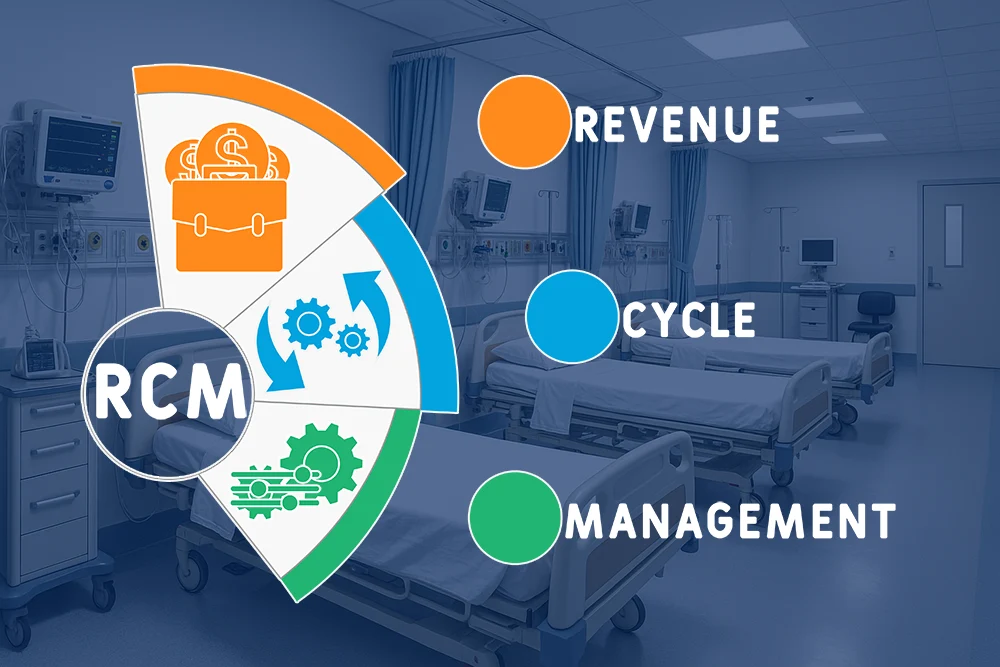For emergency rooms, urgent care facilities, freestanding ERs, and physician practice groups, strong financial performance begins long before a claim is submitted. Front-end revenue cycle management in emergency and urgent care—the processes that occur during patient registration, insurance verification, and financial counseling—sets the stage for clean claims, faster payments, and improved patient satisfaction.
When front-end processes break down, the results are costly: higher denial rates, slower reimbursement, frustrated patients, and more write-offs. According to the Healthcare Financial Management Association (HFMA), as many as 30% of claim denials can be traced back to front-end errors.
What Is Front-End Revenue Cycle Management?
Front-end RCM refers to the activities that happen before and during the patient encounter, including:
- Insurance eligibility verification
- Prior authorization (when required)
- Accurate demographic entry
- Collecting co-pays and deductibles at registration
- Patient financial counseling and education
These steps may seem simple, but together they form the foundation for strong emergency department revenue cycle solutions and reduced write-offs.
Why It Matters in Emergency and Urgent Care
Emergency medical billing services and urgent care billing settings face unique challenges compared to scheduled physician visits:
- High patient volume puts pressure on registration staff, increasing the risk of data entry mistakes.
- Incomplete or changing insurance information often leads to errors that delay payment.
- High-deductible plans shift more costs to patients, making it harder to collect after discharge.
- Stressful encounters mean patients and families may not focus on paperwork, increasing the likelihood of missing or inaccurate data.
Without strong ER and urgent care front-end billing processes and controls, these issues snowball into denials, delays, and dissatisfied patients.
Best Practices for Strong Front-End RCM
1. Real-Time Eligibility Verification
Automated verification ensures coverage is active, deductibles are known, and patient responsibility is clear upfront. This reduces denials and prevents unpleasant billing surprises.
2. Accurate Patient Registration
Even small errors—like a misspelled name or incorrect policy number—can trigger denials. Staff training, double-check protocols, and automated system alerts help maintain accurate patient registration in urgent care and ER facilities.
3. Upfront Patient Collections
Facilities that collect deductibles or co-pays at registration dramatically reduce write-offs later. Even partial upfront payments demonstrate commitment and improve recovery.
4. Early Financial Counseling
Explaining costs, payment options, and available financial assistance helps patients understand their role in the process. Transparency leads to higher satisfaction and willingness to pay.
5. Monitor Front-End KPIs
Tracking clean claim rates, eligibility verification completion, and point-of-service collections helps organizations spot weaknesses early and make targeted improvements.
The Cost of Weak Front-End Processes
When front-end revenue cycle management in emergency and urgent care is neglected, facilities face:
- High denial and rejection rates
- Lost revenue from uncollected balances
- Increased rework for billing staff
- Patient complaints due to surprise bills
- Unstable cash flow that impacts growth
The downstream effects are both financial and operational—affecting staff morale, patient trust, and the ability to expand services.
FAQs
How much revenue is lost to front-end errors?
Studies show that up to 30% of denials are linked to registration or eligibility errors.
What are the most important front-end metrics to track?
Key metrics include registration accuracy, eligibility verification rates, and point-of-service collections.
Does technology alone solve front-end challenges?
No. While eligibility and automation tools help, staff training and consistent workflows are equally important.
How does improved front-end RCM affect patients?
Patients benefit from fewer surprise bills, faster claims processing, and clearer communication—all of which improve satisfaction.
How does coding tie into front-end processes?
Accurate coding depends on complete, correct information from registration. Many organizations partner with trauma and urgent care coding specialists to ensure compliance.
Improve Collections With a Partner Who Understands ER & Urgent Care — Schedule Your Free Consultation
Strengthening front-end revenue cycle management in emergency and urgent care requires more than just technology—it takes proven workflows, trained staff, and a partner who knows the unique pressures of ERs, urgent care facilities, freestanding ERs, and physician practice groups.
That’s where 360 Medical Billing Solutions comes in. With more than 25 years of experience, we help organizations:
- Reduce costly denials caused by registration and eligibility errors
- Improve clean claim rates through front-end accuracy and real-time verification
- Equip front-line staff with tools that make upfront collections easier and more transparent
- Integrate seamlessly with trusted third-party coders specializing in trauma and emergency care
- Strengthen cash flow with little to no initial out-of-pocket costs and no hidden fees
By focusing on the front end of the revenue cycle, 360 helps facilities capture more revenue at the start, leading to faster payments, fewer write-offs, and stronger financial stability.







